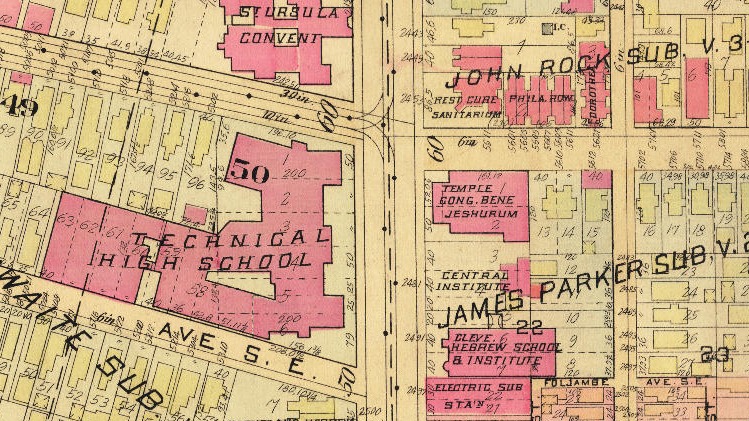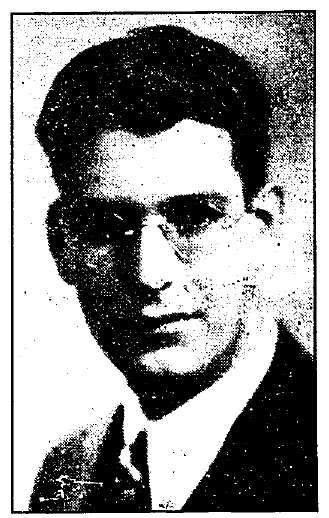
By the 1920s, Cleveland's growing Jewish community approached 10% of the city's population. As with Jewish enclaves in other major American cities of the era, the Jewish-American community of Cleveland began spreading into the suburbs. B'nai Jeshurun, became the first to make the move when in 1919 the congregation decided to relocate out of the city proper and into the nearby suburb of Cleveland Heights. The new building on Mayfield Road held over 3,000 worshipers and included a gymnasium, a banquet hall, and an entertainment hall, as well as a library. The congregation also retained its old building on East 55th Street for other social events before the existing structure became Shiloh Baptist Church.
Cleveland's Jewish population went back decades. Fleeing religious persecution in Europe and seeking greater job opportunities, Hungarian Jewish immigrants to the United States flocked to large cities. The western side of Cleveland attracted to pre-existing Jewish settlements and manufacturing jobs. The old German synagogues of earlier settlers simply would not do, necessitating buildings for distinctly Hungarian congregations. In 1866, Hungarian Jewish immigrants began meeting in their own homes, and then in Gallagher’s Hall on Erie and Superior to pray, partially because they simply could not afford the fees the German synagogues required. In 1906, the Hungarian Jewish community of B'nai Jeshurun constructed their first permanent synagogue on East 55th Street and called it home for two decades.
B’nai Jeshurun’s congregation moved into the new temple in March of 1926, and Rabbi Abraham Nowak consecrated the structure in August of the same year: by now, over a thousand Jews called B’nai Jeshurun home. It was also at this time that B’nai Jeshurun gained its famous moniker— the Temple on the Heights, or more simply, Heights Temple. In comparison, the second Jewish congregation to move to the suburbs came nearly 20 years later when Anshe Chesed Fairmount Temple, Cleveland's oldest Jewish congregation, moved to Beachwood in 1947.
The congregation elected its first Cleveland-born Head Rabbi in 1934, Rudolph Rosenthal. At the time of Rosenthal’s election, the Temple on the Heights served more than 1,000 families, had more than 600 youths in its education program, and was home to one of the largest Conservative congregations in the entire United States and would continue to grow over the next three decades. By the late 1960s, further suburbanization of the Jewish-American community moved congregants farther east. It was obvious the still-vibrant synagogue would need to move once again.
In 1978, only a few years after the 110th anniversary of B’nai Jeshurun’s founding, some 400 members of the congregation participated in a ceremonial groundbreaking of the temple’s new location on Fairmount Boulevard, in Pepper Pike, further east than Cleveland Heights and truly suburban. In late 1979 Rabbi Herbert Schwartz consecrated the new temple on the first night of Hanukkah.
On October 30, 2016, B’nai Jeshurun, Cleveland's third-oldest continuously operated Jewish congregation, capped off its 150th anniversary with a gala. The success of the Temple on the Heights in smoothing its congregants' transition to suburban life and the congregation's continued vitality over the past century and a half cements B'nai Jeshurun as a mainstay of the Cleveland metropolitan area.
Images




